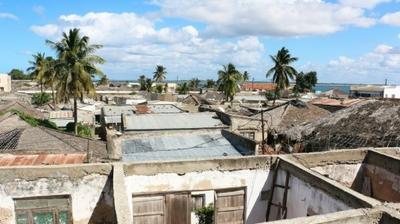
The island of Mozambique, forgotten for a century, is gradually being reborn from its ashes. The former capital of Portuguese colonialism in East Africa, included on the UNESCO World Heritage List, is regaining its former splendor thanks to the participation of private sector investors working on its restoration.
“When my parents arrived at this house, 21 years ago, it was still in good condition. No part of it had collapsed, and we could still live upstairs,” says Idris Nserere, a 27-year-old tour guide who lives in a country house. . Destroyed house.
If the structure suggests a huge Portuguese colonial building, all that remains are stones and his family lives on the land, in precarious conditions.
“My parents are selling (this house) to a Dutchman for 1 million mekels (25,000 euros),” says the cheerful young man who looks relieved.
Like many monuments on the island of Mozambique, his house had to be renovated from top to bottom by a foreigner who fell under the spell of this paradoxical place.
The history of this strip of land of less than two square kilometers, connected to the beach by a three-kilometre-long bridge, is one of long decline.
Discovered by Portuguese navigators in 1498, its strategic location made it a stronghold in the Indian Ocean during the times of the gold, ivory and slave trade.
But in 1898, it ceded its status as capital to Maputo, which lay about 2,000 kilometers south, near the gold mines of South Africa. Since then, the deterioration of this pastel-hued stone and lime town has been exacerbated by the mass departure of Portuguese settlers upon the country's independence in 1975.
Designated a UNESCO Heritage Site since 1991, the island of Mozambique is experiencing a somewhat new lease of life. Private houses and monuments have been restored, roads have been renovated, and old, dilapidated houses now host restaurants and guest rooms.
– One million dollars to renovate a house –
“Recently, mainly private investors have arrived,” says Yoric Hudayer, a French architect living in France. “The good days of European funds are over, so instead we have people who want to invest in secondary homes with swimming pools, or developers.” . Mozambique for 20 years, leading the process of renovating ancient customs into a real estate complex.
The city council views these investments positively because it takes “a million dollars to restore a destroyed house” and “nobody has that money,” according to Said Gemba, the island’s mayor from Mozambique.
In fact, the budget allocated for restoration in the city is non-existent, and UNESCO was forced to close its offices in 2012 due to lack of funds.
“The kind of intervention that is necessary, which must respect heritage rules and use indigenous materials, is too expensive for the majority of the island’s population,” adds Claudio Diamantino, director of the Conservation Council for the Island of Mozambique (GACIM). ).
This organization is responsible for monitoring the renovation work carried out on 400 listed buildings in the historic district.
Most investors come from Europe or Maputo, while on the beaches in the south of the country, the vast majority of hotel infrastructure is owned by South Africans.
If locals generally welcome the arrival of these job-creating foreigners, some nevertheless fear that the island will be divided again as happened in the time of the Portuguese.
“After a while, all the locals will leave the historic center to come to the Makoti (slums), because all the buildings will be bought by tourists” in the old center, Judge Idris Nserere said.
Identifiable by their palm-leaf roofs, these slums occupying the southern half of the island were built by slaves and are often located below sea level.
“At the time of the rainy season [de décembre à mars]“Water accumulates there and cannot escape, leading to malaria and cholera,” Judge Idris Nserere.
The island is far from being filled with tourists. It welcomed 5,000 people in 2014 and remains a well-kept secret for lovers of ancient stones.






